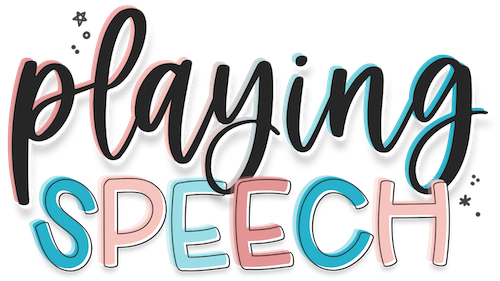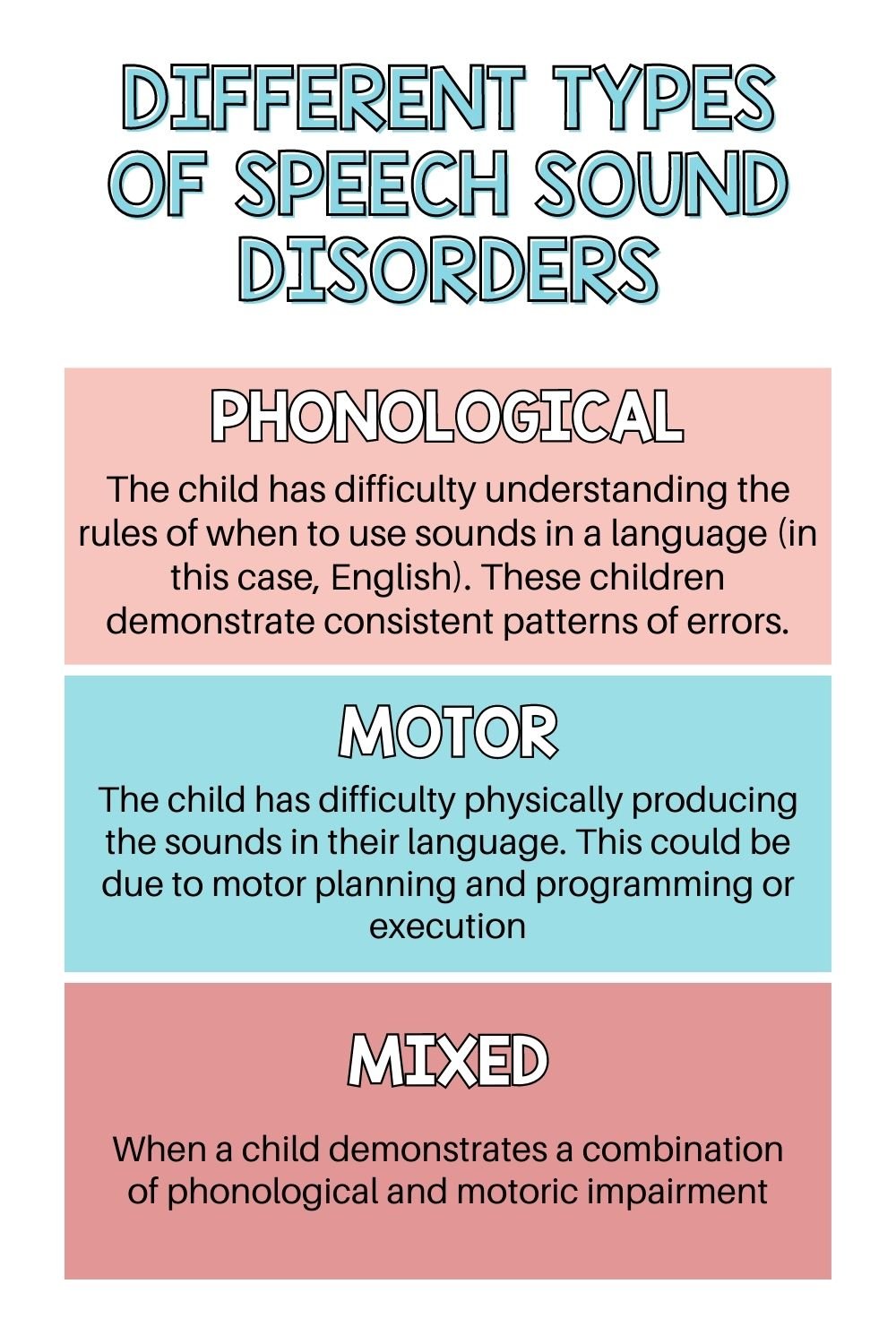Everything You Need to Know About Toddlers and Speech Sound Disorders
CAN TODDLERS HAVE A SPEECH SOUND DISORDER?
Sure can! We all have these children on our caseload - very young (let’s say 2-4 years old) and very unintelligible. Or very young, but they hardly have any words at all! Is this a language issue? A speech issue? That’s the million dollar question!
These cases are so common, yet there isn’t a ton of available guidance for how to tackle therapy with these children! This is what inspired me to create a comprehensive course on toddlers and speech sound disorders. More on that below!
But I am here to tell you that there is a subset of toddlers who’s communication difficulties are more a result of a speech sound disorder (or even a delay) than a language delay or disorder. Our job is to figure out who they are so that we can appropriately intervene and hopefully remediate their speech sound disorder before they reach Kindergarten.
SPEECH vs. LANGUAGE
So, first, if we want to talk about speech sound disorders and toddlers, we should clarify…what is speech? Speech is different from language in that speech is the way we actually say the sounds, how we physically produce the sounds in words. Speech skills include articulation, voice, and fluency. Language includes the words that we use and understand to communicate meaning. So language includes vocabulary, yes. But it also includes HOW we use words…for example, how we use words to get our wants and needs met, to protest, to greet people, etc.
A child can have typically developing language and impaired speech. Or a child can have typically developing speech and impaired language skills. And there is the chance that a child may have an impairment in the areas of both speech and language. For the purpose of this blog post, we are concerned with early preschoolers and toddlers who have overall typical language skills but have signs and symptoms of a speech sound disorder.
DIFFERENT TYPES OF SPEECH SOUND DISORDERS
Let’s talk about the types of speech sound disorders we may see in preschoolers or toddlers. There are 3 types of speech sound disorders to consider in this population. A speech sound disorder could be phonologically based, motor based, or a mix of both! It’s important to know which type of speech sound disorder a child is presenting with, because the diagnosis will determine the treatment approach you are going to use.
Phonological Disorders
A speech sound disorder that is phonologically based results when a child has difficulty understanding the rules of when to use sounds in a language (in this case, English). These children demonstrate consistent patterns of errors. Sometimes, these toddlers demonstrate typically developing phonological patterns, like fronting (e.g. saying “tea” for “key”). Sometimes, toddlers can demonstrate atypical phonological patterns.
Motor Based Speech Sound Disorders
A motor based speech disorder results when the child has difficulty physically producing the sounds in their language. This could be because of a motor planning and programming issue (i.e. childhood apraxia of speech) or an execution issue (e.g. dysarthria or an articulation impairment).
Mixed Speech Sound Disorders
And sometimes, a child can present with aspects of both a phonological disorder and a motor based speech disorder. We call this a mixed speech sound disorder.
SO, WHICH TODDLERS NEED TO WORK ON SPEECH SOUNDS?
First, I’m going to say there is no black and white answer to this question. You have to use your clinical judgement and you have to consider the whole child when determining if a toddler needs to work on their speech skills. You also need to know what is typical in toddler speech sound development so that you can recognize when a child is presenting with speech that is delayed or disordered.
Let’s review typical toddler speech sound development quickly.
Most children have acquired most speech sounds by the age of 5. By the end of their 4th year of life, most children should be able to produce the following sounds (not written in IPA): V, J, S, CH, L, SH, Z, G, K, F, T, NG, Y, B, N, M, P, H, W, D.
Most phonological patterns should be resolving by the end of the 4th year. Patterns that may persist past age 4 include: stopping of SH, CH, J, and TH; gliding; and cluster reduction of S clusters.
A 4 year old should be approximately 100% intelligible to a known listener and about 75% intelligible to an unknown listener.
So now that we have reviewed typical toddler speech development, we can talk about which toddlers are more likely to need intervention when it comes to how they produce speech sounds. Here are some red flags to look for in a toddler’s speech that may indicate the child needs speech therapy.
SIGNS A TODDLER MAY NEED SPEECH THERAPY:
limited consonant repertoire
whole classes of sounds missing
demonstrates a sound preference
distorted vowels or consonants
stuck using single syllable utterances
retention of phonological patterns that should have been resolved
unexpected errors/patterns of errors
fewer than 5 consonant sounds by 24 months
productions are mainly vowels with limited use of other syllable shapes
very few consistent words or word approximations
This list is not exhaustive. But these are some definite red flags when looking at toddler speech that would indicate a child needs more support in the area of speech sound development.
WHAT ABOUT LANGUAGE?
Do not forget about language stimulation with this population! I want to stress that ALL toddlers will benefit from language-rich interactions and language building activities. They are still learning language after all! And, you can work on language and speech at the same time. You can do this by incorporating speech targets into language-rich activities like play, singing, and book reading. (I give you tons of activity ideas for how to do this in the toddlers and speech sound disorders course I mentioned!)
HOW DO I APPROACH SPEECH SOUND THERAPY WITH A CHILD THIS YOUNG?
Pick an intervention approach that is suitable for this age group and utilize cueing and other therapeutic techniques to practice target words in a play-based therapy session! Don't worry- we tell you exactly how to do all of this in the upcoming course on Speech Sound Disorders in Early Intervention.
In the course, we cover identification, assessment, and treatment for speech sound disorders in children ages 2-4. You'll learn what interventions are available for this age group and how to choose an approach that is individualized for each child. You will learn the ins and outs of each approach along with specific guidance for how to select targets for your therapy sessions. You'll also learn exactly how to design a play-based therapy session that is effective, fun, and engaging for toddlers and preschoolers!
The course includes 6 modules and a 25 page workbook to help you feel confident working with these little ones in speech therapy!
Click HERE to join the waitlist and be the first to know when it comes out!
SOURCES:
Coplan, J., & Gleason, J. R. (1988). Unclear speech: recognition and significance of unintelligible speech in preschool children. Pediatrics, 82(3 Pt 2), 447–452.
Crowe, K., & McLeod, S. (2020). Children's English consonant acquisition in the United States: A Review. American Journal of Speech-Language Pathology, 29(4), 2155–2169. https://doi.org/10.1044/2020_ajslp-19-00168
Hustad, K. C., Mahr, T. J., Natzke, P., & Rathouz, P. J. (2021). Speech development between 30 and 119 months in typical children I: Intelligibility growth curves for single-word and Multiword Productions. Journal of Speech, Language, and Hearing Research, 64(10), 3707–3719. https://doi.org/10.1044/2021_jslhr-21-00142
McLeod, S., & Crowe, K. (2018). Children's consonant acquisition in 27 languages: A cross-linguistic review. American Journal of Speech-Language Pathology, 27(4), 1546–1571. https://doi.org/10.1044/2018_ajslp-17-0100
Overby, M. S., Caspari, S. S., & Schreiber, J. (2019). Volubility, consonant emergence, and syllabic structure in infants and toddlers later diagnosed with childhood apraxia of speech, speech sound disorder, and typical development: A retrospective video analysis. Journal of Speech, Language, and Hearing Research, 62(6), 1657–1675. https://doi.org/10.1044/2019_jslhr-s-18-0046







